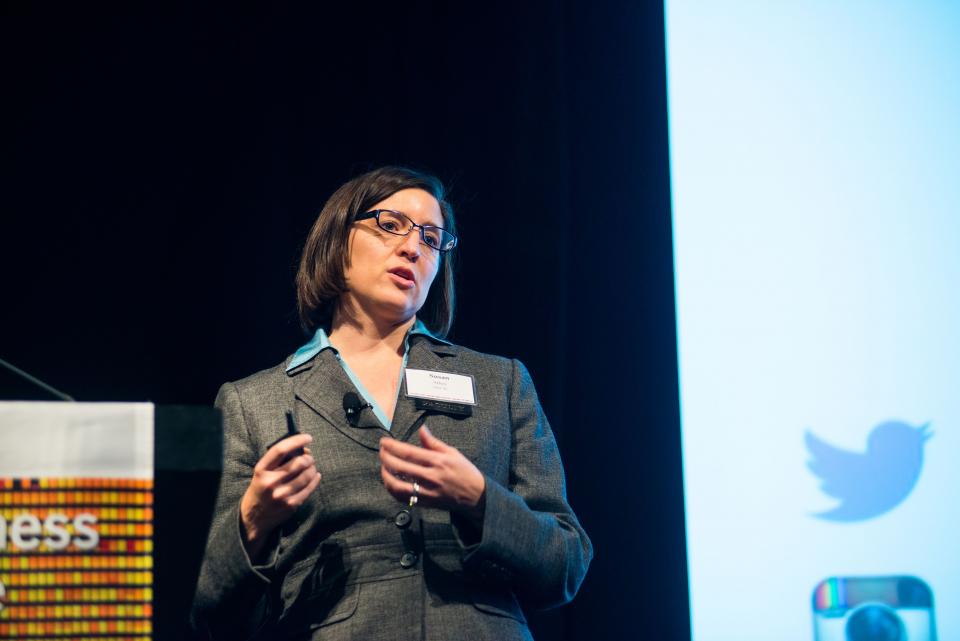
According to Stanford Professor Susan Athey, AI could help rebuild the post-COVID-19 world economy. The photo was taken at a recent conference. (Source: Stanford University)
Stanford Professor Advocates AI to Help Transition Workforce for New Economy Approach
After eight months of the coronavirus disaster, it’s not too soon to talk about rebuilding the economy, even if it’s not over yet. In fact, one professor says it’s the perfect time to consider the inequality in our current economy and creating a new approach for the future.
In an article from Stanford University’s Human-Centered Artificial Intelligence program’s blog, Sachin Waikar breaks down ideas shared at a recent hearing where U.S. House members were trying to understand how to help the U.S. economy recover from the ongoing COVID pandemic and prepare for a brighter future and the key role of AI in this effort.
On September 10, Susan Athey, Stanford GSB Economics of Technology Professor and Institute for Human-Centered AI associate director, testified before the U.S. Congress’s House Budget Committee as an expert witness for a hearing entitled “Machines, Artificial Intelligence, & the Workforce: Recovering & Readying Our Economy for the Future.”
“AI has enormous positive potential for society,” the professor said in her opening remarks, noting the value of AI-driven solutions related to education, training, remote work, government services, medicine, and other areas.
Waikar’s article highlighted six points from Athey’s talk at the hearing. Here are a few of them that take positive approaches for business in general.
Toward a Longer, Happier (Work) Life
With mounting questions about the long-term viability of social-entitlement programs like Medicare, it’s critical to provide for the U.S.’s senior population, whether working or not.
“AI and automation can help people live independent, fulfilling lives,” Athey said. “Physical and cognitive challenges, including on the job, can be alleviated through augmenting AI or physical robots,” for example. That might help people work longer.
She noted that service work may not be replaced by automation, which will sustain employment opportunities for seniors and enable them to contribute to society in meaningful ways should they choose to.
Those workers who are replaced by automation should be retrained, she said.
Where to Place Displaced Workers
Historically, we haven’t done a great job of dealing with displaced workers, Athey said, which has become a critical issue. The number of bank-teller jobs dropped 26 percent in the past decade, for example.
“We have a lot more tools now to use data to figure out what the next best step for a worker is,” said Athey. “Like what types of upskilling will work for a person in a given circumstance.”
Greater confidence about future employment prospects will enhance people’s motivation to retrain for more sustainable, fulfilling work. Athey is working with Rhode Island’s government, for example, to improve data to evaluate job-training programs and provide workers better information about training opportunities.
Click here for Athey’s full report to Congress.
read more at hai.stanford.edu







Leave A Comment